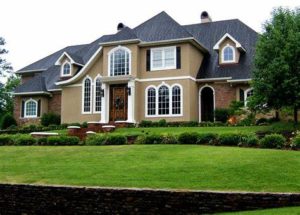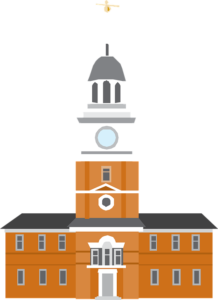Description
When buildings are first constructed or significantly renovated, they must meet the current energy code. Municipalities reference New York State’s energy code, which in turn reference the International Energy Conservation Code (currently the 2018 version). Municipalities are allowed to supplement the state energy code, as long as the supplement is more stringent (results in greater energy efficiency).
There are two general strategies that municipalities can follow to create a more stringent energy code. One or both strategies can be used.
The first strategy is to adopt a supplement with more stringent energy conservation requirements. For example NYSERDA has created the NYStretch Energy Code-2020, which saves 10-12% over the New York State 2020 Energy Code.
Many cities are implementing more stringent energy codes. The Town and City of Ithaca, NY collaborated to create the Ithaca Energy Code Supplement. Municipalities can adopt the Home Energy Rating System (HERS) Index, and require that buildings obtain a certain index or better. Even more stringent energy codes are available, such as Zero Net Energy or Zero Carbon codes, with a total energy annual footprint being equal to the amount of renewable energy created on site.
Perhaps the most stringent are the German passive house (Pasivhaus), the U.S. Passive House Institute US Inc (PHIUS), and the Swiss MINERGIE-P voluntary standards. These standards call for a super insulated and airtight building shell, small windows, and advanced ventilation and air handling systems to create a building that requires little energy for space heating/cooling. Buildings that meet Passive House standards use 60-70% less energy compared to conventional homes, and 90% less for heating loads. Also, these buildings have superior indoor air quality, resilience during power outages, and an extremely quiet, comfortable indoor environment.
The second strategy is to require a more comprehensive compliance pathway, no matter which energy code is used.
The standard New York energy code and the NYStretch Energy code allow compliance through software tools REScheck and COMcheck from the US Department of Energy’s Building Energy Codes Program. The software checks the building plans against requirements in the energy code. However, this compliance pathway only verifies the building plans, not actual construction, and does not take many energy loads into account. Adopting an energy code supplement that requires a more stringent compliance pathway evaluates the whole-house efficiency and verifies it with measurements after construction. Evaluation by a certified HERS rater is one such comprehensive compliance pathway.
In addition to saving energy, high performance buildings are more comfortable to live in. Also, their value is expected to increase over time as energy costs increase.
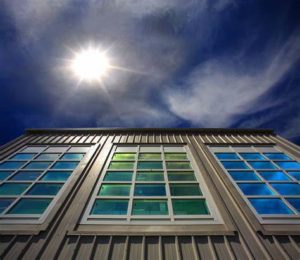
1
2
3
4
Implementation Phases
Adopt New York Stretch energy code.
Adopt more stringent energy code than NYStretch Energy Code.
Require a compliance pathway that evaluates the whole-house efficiency and verifies it with measurements after construction, such as evaluation by a certified HERS rater.
Adopt Zero Net Energy code.
Challenges
Building inspectors and code enforcement must be trained to be able to enforce new standards. Additionally, staff may not have resources to implement and enforce (time and equipment). Third party enforcement and inspection may be required to reduce staff burden.
To implement NY Stretch and Stretch to Zero building practices will require government incentives and building code regulations for widespread adoption.
Many local builders and architects do not have expertise to design and/or build high performance buildings.
Occupant behavior associated with electric devices and plug loads can influence the amount of energy used in ZNE buildings.
It’s a challenge to recover higher initial costs at resale of energy-efficient and ZNE buildings when the benefits are poorly understood.
Initial costs will be higher. Tax breaks and energy savings could make ZNE buildings financially viable, but education about potential energy savings is essential.
Example Municipalities
Several municipalities have already implemented this action…
- New York, New York passed Local Law 32 of 2018 which intends for the city to have a 20% more stringent energy code than the sate of New York
- Through the passage of House Bill 409 in the Pennsylvania legislature, Philadelphia was able to adopt codes for commercial construction in compliance with International Energy Conservation Code of 2015.
- Ithaca New York on June 6, 2014 adopted stricter energy regulations and codes than the State of New York mandates
Greenhouse Gas (GHG) Reductions
Data
Average of new residential buildings from 2010 to 2017: 65 Buildings [Town of Bethlehem Demographic and Growth Analysis 1991-2018, Page9]
Average of new commercial buildings from 2000 to 2012: 7 buildings [Town of Bethlehem Demographic and Growth Analysis 1991-2018, table 2 Page 37]
CO2e reduction in percentage after adopting stringent energy code: 11% [NYStretch Energy Code-2020, NYSERDA]
Assumptions
This strategy is adopted by all the new commercial and residential constructions in Bethlehem, NY.
Methodology
We calculated the:
- Average number of new construction residential and commercial buildings.
- Average emission per commercial and residential unit in Bethlehem
- Total CO2e through newly constructed residential and commercial units.
- Total CO2e reduction after adopting stringent energy code
Result
50 Metric tons of CO2e is reduced per year by adopting stringent energy code.
This results MODERATE GHG emissions reductions.
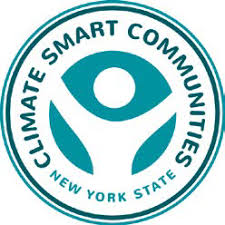
Climate Smart Communities (CSC) & Clean Energy Communities (CEC) Link
This action is also related to CEC and CSC actions for which municipalities can earn points toward certification.
CEC Actions:
- Municipalities can earn 1200 CEC points through CEC’s NYStretch Energy Code action, and also are eligible to apply for a related action grant if their stretch energy code goes into effect no later than 12/31/21.
CSC Actions:
- Municipalities can earn 10 CSC points through CSC’s PE6 Action: New York Stretch Energy Code.
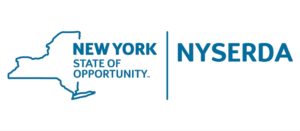
Co-benefits
There are multiple co-benefits to completing this action, including:
- More efficient new home construction and renovation standards.
- Economic benefits to homeowners and renters in reduced heating and cooling requirements.
- Improved comfort and convenience in homes.
Resources
Guide for encouraging cost compliance: GHG Impact
City energy offers tips on Implementing energy codes.
The NYStretch Energy Code-2020Stretch Energy Code is a “statewide model code for New York jurisdictions to use to meet their energy and climate goals by accelerating the savings obtained through their local building energy codes.”
Ithaca Energy Code Supplement published its incentives and plans to adopt a cleaner energy code.
https://www.nyserda.ny.gov/All-Programs/Programs/Energy-Code-Training/NYStretch-Energy-Code-2020
https://www.aceee.org/blog/2019/09/us-cities-adopt-stricter-building
http://www.ithacagreenbuilding.com/
https://www.hersindex.com/
https://newbuildings.org/hubs/zero-energy/
https://www.https://www.motherearthnews.com/green-homes/passive-home-standards-zm0z14amzsor
https://www.cityenergyproject.org/resource-library/policy-and-programs/codes/
https://www.nyserda.ny.gov/All-Programs/Programs/Energy-Code-Training/NYStretch-Energy-Code-2020
http://www.ithacagreenbuilding.com/ http:/www.dos.ny.gov/lg/publications/Adopting_Local_Laws_in_New_York_State.pdf
zeroenergyproject.org
